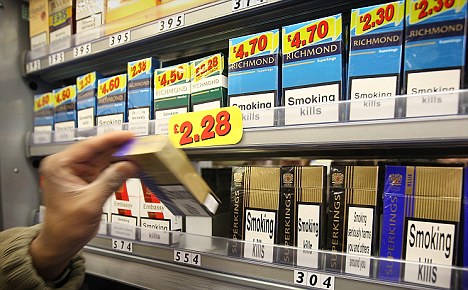Review of tobacco laws shows they helped reduce smoking
Two key tobacco laws of the last decade helped protect children from poisonous secondhand smoke and contributed to a fall in smoking among young people and adults, according to a major government review.
Fresh has welcomed the statutory review by the Department of Health and Social Care of tobacco legislation introduced between 2010-15 – including laws which removed tobacco displays in shops and prohibited smoking in cars carrying children.
The DHSC has decided that the regulations can remain in force and the Government will be maintaining these regulations as they are. Following a review process including independently commissioned research, it found:
- The removal of point-of-sale tobacco displays met objectives by contributing to a reductions in smoking prevalence. It also found businesses did not report any undue burden imposed on them beyond what was originally anticipated.
- The evidence for Smokefree vehicles legislation met original objectives by reducing the number of children regularly exposed to second-hand smoke in private vehicles. A report found a 72% reduction in self-reported exposure to tobacco following the implementation of the regulations.
- The DHSC review also looked at Nicotine Inhaling Products (NIPs) regulations, also found limited evidence to conclude that the NIPs legislation has also achieved its original objective by limiting increases in use of these products amongst young people.
Latest figures from the Office for National Statistics for 2019 show that 15.3% of adults were smoking in the North East, compared to 29% in 2005. That is a fall of 47.2% – larger even than the South East of England.
Ailsa Rutter OBE, Director of Fresh, said: “These are important laws to protect children’s health. Smokefree cars gave children one more place where they are protected from tobacco smoke and point of sale rules removed a form of tobacco advertising previously seen every time a child entered a shop.
“Laws like these to reduce smoking are needed, they are workable and they are wanted – nobody who smokes wants their own child to start. However, tobacco companies have fought tooth and nail to try to stop these and other laws happening. Whatever helps to reduce smoking harms their profits.
She added: “The fall in smoking over the last two decades shows this can be achieved and laws like these have made a positive impact. However, smoking still kills over 77,000 people a year in England and around 15 people a day here in the North East, and is the leading cause of health inequalities and premature death.
“We are calling on the Government for more action to deliver on its ambition to be smokefree by 2030 and look at new ways to reduce our biggest avoidable killer. It is vital that we have a comprehensive and properly funded new tobacco control plan for England which reduces smoking across adults, children and young people.”

How it used to look: tobacco displays often took up large areas in shops and were used by tobacco companies as a way to advertise their products, making smoking appear more tempting to children and making it harder for people to quit.
The Tobacco Display Ban came into effect in 2012 for large stores and 2015 for smaller stores, aimed at putting tobacco out of sight and out of mind for young people, reducing how often they noticed tobacco. And from October 2015 it became illegal to smoke in a car (or other private vehicle) with anyone under 18 to protect children from secondhand smoke, which can put children at risk from meningitis, cancer, bronchitis and pneumonia, and make asthma worse.
Both laws were supported by national charities, public health bodies and in the North East and local authorities.
DHSC have now launched a further consultation on the Tobacco and Related Products Regulations (TRPR) and the Standardised Packaging of Tobacco Products regulations (SPoT). TRPR deals with the manufacture, presentation and sale of tobacco and related products, including e-cigarettes and refill containers as well as smokeless and novel tobacco products.
It was through the TRPR that flavoured tobacco, including menthol, was removed from sale. In 2016, the UK became the second nation in the world after Australia to introduce standardised packaging of tobacco products. Standard packs are designed to prevent the next generation of smokers but have also had a positive impact on quit rates, making health warnings stand out more.
